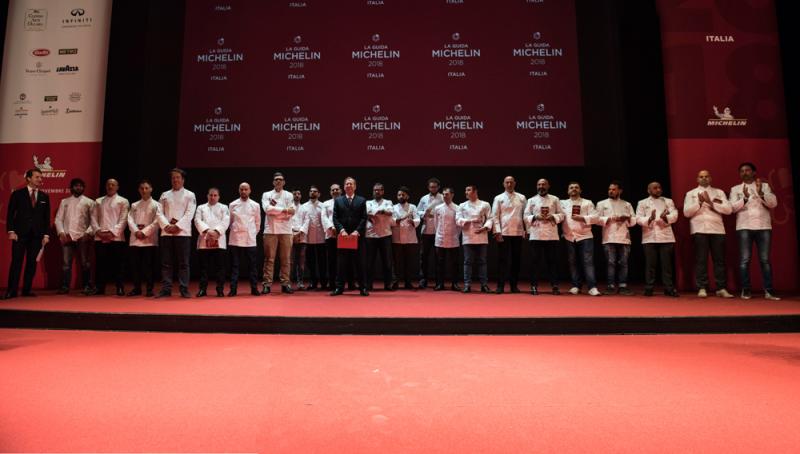The 2018 Italy edition of the prestigious Michelin guide was presented last week in Parma, a Unesco’s Creative City of Gastronomy since 2015, in the beautiful setting of the city’s opera house, the Teatro Regio (Italy Magazine was invited to attend the presentation).
Michelin awarded 26 restaurants new stars in its 2018 Italy guide: 22 received one star, three received two stars, and only one received the much coveted three stars. There are now 356 Michelin-starred restaurants in Italy.
[One star means "high quality cooking, worth a stop;” two stars means “excellent cooking, worth a detour;” three stars means “exceptional and unique cooking, worth a special journey.”]
Indeed, the biggest news was the award of three stars to Norbert Niederkofler of the St. Hubertus restaurant in San Cassiano, in the Badia Valley of South Tyrol. He is joining a small circle of three Michelin-starred chefs in Italy, eight, all of whom have confirmed their three stars (consider that there are just a little more than 100 restaurants with three stars in the world). They are:
Piazza Duomo, Alba (Piedmont)
Da Vittorio, Brusaporto (Bergamo)
Dal Pescatore, Canneto Sull’Oglio (Mantua)
Reale, Castel di Sangro (Abruzzo)
Enoteca Pinchiorri, Florence
Osteria Francescana, Modena
La Pergola, Rome
Le Calandre, Sarmeola di Rubano (Padua) (helmed by Massimiliano Alajmo, the world's youngest chef to have achieved, at the age of 28, three Michelin stars).
There have been three additions to the group of two Michelin-starred restaurants in Italy, which are now 41. They are:
VUN, Milan - chef Andrea Aprea;
La Siriola, San Cassiano (notice it’s the same town of the new three-starred restaurant, so definitely a town for traveling foodies!) - chef Matteo Metullio;
Magnolia, Cesenatico - chef Alberto Faccani.
Two restaurants in the two-star category, both in Milan, were downgraded to the one-star category: Cracco and Sadler.
As for the one-star category, there are 22 additions to the 2018 Italy guide, for a total of 306 restaurants.
Lombardy appears to be the most dynamic region with seven new entries and 63 Michelin-starred restaurants; Campania follows with 41; third comes Piedmont, with 40 restaurants, then Veneto (38) and Tuscany (35).
Rome is the province with the highest numbers of Michelin starred restaurants (25), followed by Naples (23), Milan (20), Bolzano (18), and Cuneo (17).
30 percent of the 26 new Michelin-starred chefs are 35 years old or younger; four of them are 30 or younger.
None of this year’s newly starred restaurants have female chefs at the helm. A special Michelin award, Female Chef 2018, will be announced in March.
The Michelin guide originated in France in 1900, the idea of the Michelin brothers (Édouard and André), the founders of Michelin, a tire manufacturer. The goal was to provide drivers with practical information on where to sleep and eat when they traveled, besides information on where to refuel, change tires and find a mechanic. It still is meant to be a guide for travelers.
The process to award Michelin stars is the same all over the world. Michelin inspectors visit the restaurants anonymously and pay for their meal. Their evaluation is based on five criteria: the quality of ingredients, the cooking technique, the chef’s personality, consistency throughout the meal and seasons, value for money.
The first Michelin guide in Italy was published in 1956.




